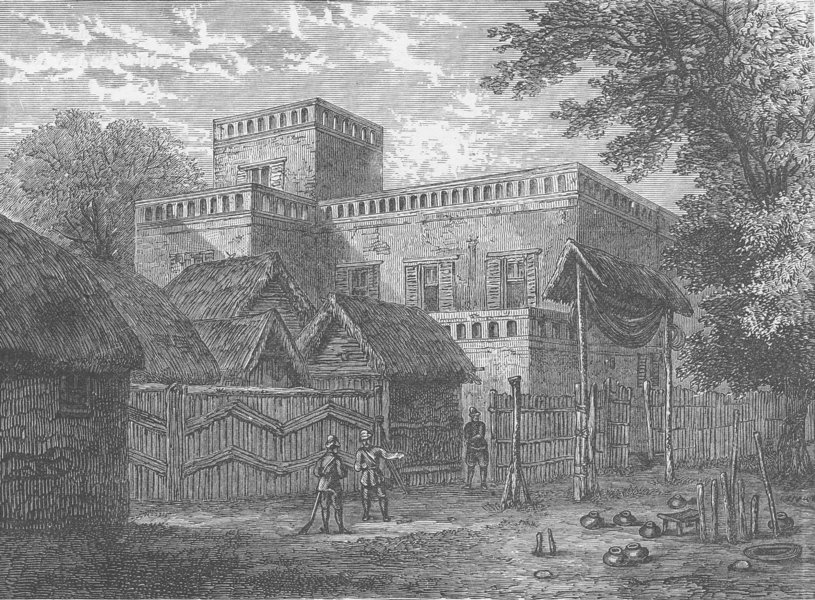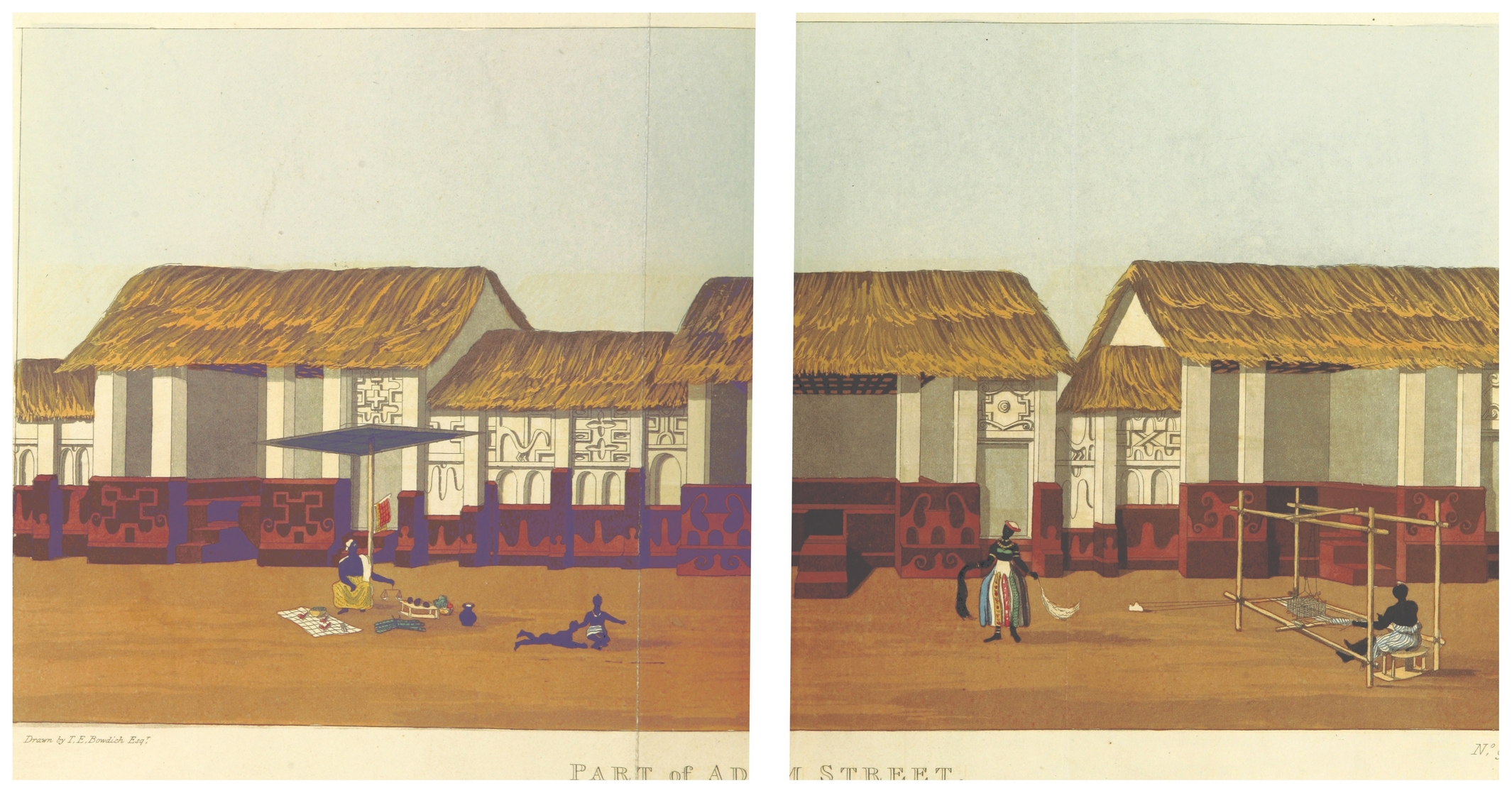Akan
Akan People
The Ashanti Empire (also spelled Asante) was an Akan empire and kingdom in what is now modern-day Ghana from 1670 to 1957. The empire also encompassed parts of modern day Côte d'Ivoire and Togo. The empire was known for its military prowess, wealth, architecture, sophisticated hierarchy and culture.
From the 15th century to the 19th century (and possibly even earlier) the Akan people dominated gold mining and trading in the region; from the 17th century on, they were among the most powerful groups in Africa.
Palace of The Asantehene
The current residence of the Asantehene is the Manhyia Palace built in 1925 by the British and presented to the Prempeh I as a present upon his return from exile.
The original palace of the Asantehene in Kumasi was burned down by the British in 1875. From European accounts, the edifice was massive and ornately built. In 1819, English traveler and author, Thomas Edward Bowdich described the palace as
...an immense building of a variety of oblong courts and regular squares [with] entablatures exuberantly adorned with bold fan and trellis work of Egyptian character. They have a suite of rooms over them, with small windows of wooden lattice, of intricate but regular carved work, and some have frames cased with thin gold. The squares have a large apartment on each side, open in front, with two supporting pillars, which break the view and give it all the appearance of the proscenium or front of the stage of the older Italian theaters. They are lofty and regular, and the cornices of a very bold cane-work in alto-relievo. A drop-curtain of curiously plaited cane is suspended in front, and in each, we observed chairs and stools embossed with gold, and beds of silk, with scattered regalia.
Winwood Reade also described his visit to the Ashanti Royal Palace of Kumasi in 1874: “We went to the king’s palace, which consists of many courtyards, each surrounded with alcoves and verandahs, and having two gates or doors, so that each yard was a thoroughfare . . . But the part of the palace fronting the street was a stone house, Moorish in its style . . . with a flat roof and a parapet, and suites of apartments on the first floor. It was built by Fanti masons many years ago. The rooms upstairs remind me of Wardour Street. Each was a perfect Old Curiosity Shop. Books in many languages, Bohemian glass, clocks, silver plate, old furniture, Persian rugs, Kidderminster carpets, pictures and engravings, numberless chests and coffers. A sword bearing the inscription From Queen Victoria to the King of Ashantee. A copy of the Times, 17 October 1843. With these were many specimens of Moorish and Ashanti handicraft.”
Infrastructure such as road transport and communication throughout the Ashanti Kingdom was maintained via a network of well-kept roads from the Ashanti Kingdom to the Niger river and other trade cities.
This page uses materials from Wikipedia available in the references. It is released under the Creative Commons Attribution-Share-Alike License 3.0.
References




